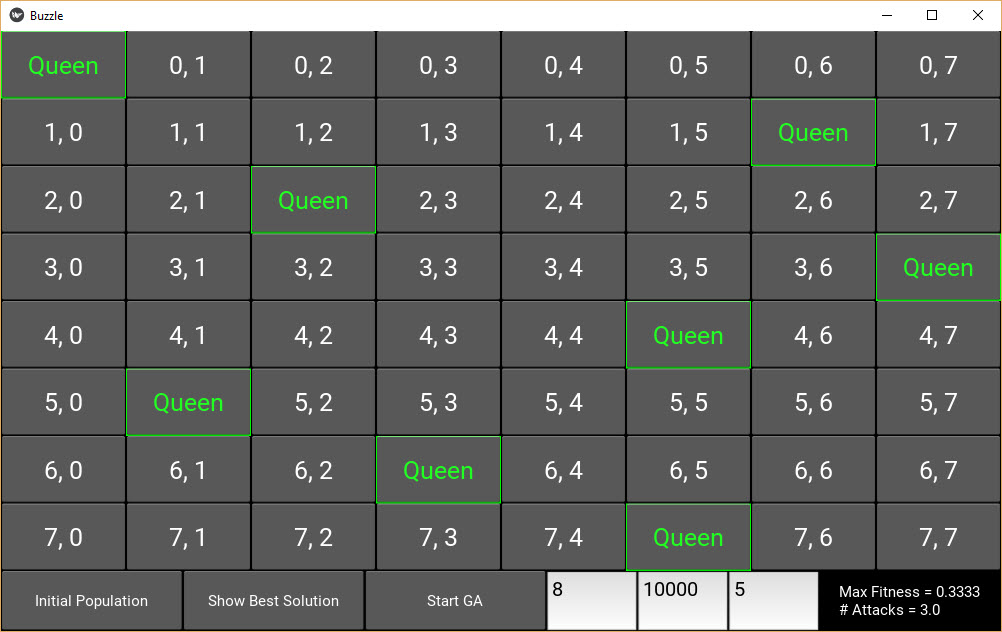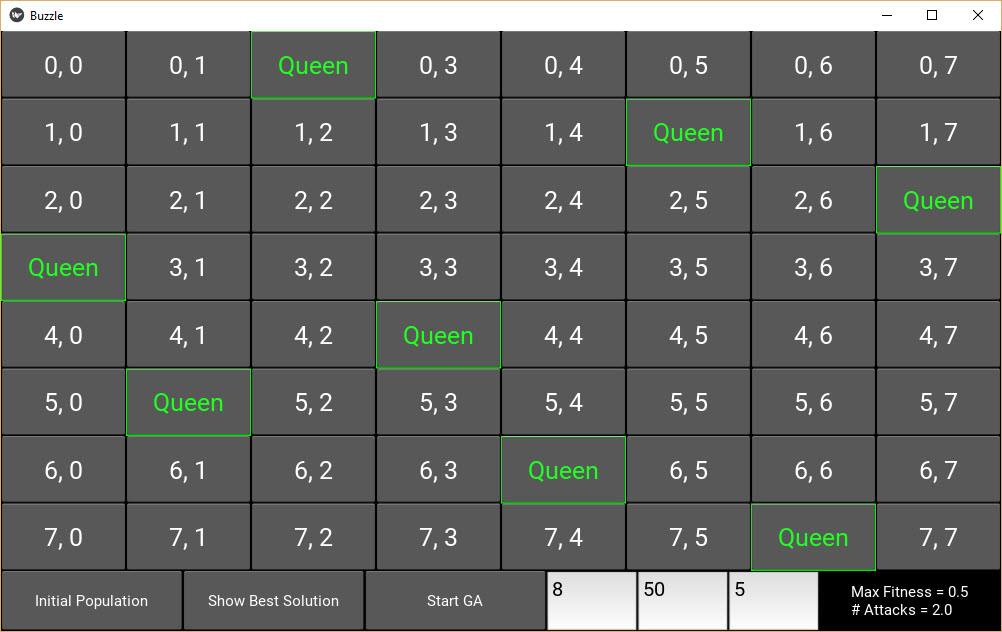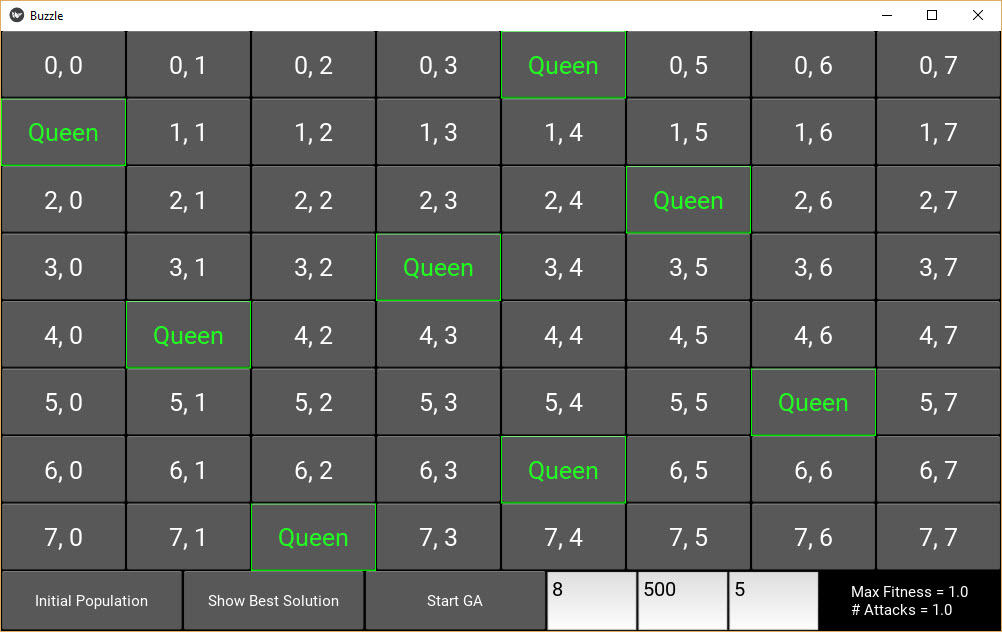Optimizing the 8 Queens Puzzle using the Genetic Algorithm from Scratch using Python and Kivy.
The project uses the Kivy cross-platform Python framework for building the GUI of the 8 queens puzzle. The GUI helps to visualize the solutions reached while the genetic algorithm (GA) is optimizing the problem to find the best solution.
I implemented the GA in a previous project at GitHub called GeneticAlgorithmPython. It uses solely NumPy (Numerical Python) for the implementation. The GA.py file within the GeneticAlgorithmPython project is imported within this project with little changes to make it suitable to optimizing the 8 queens puzzle.
The main file for this project is called main.py. Note that you have to install Kivy before running this file. After running it successfully, the window will appear as given in the figure below. The GUI uses a GridLayout for creating an 8x8 grid. This grid represents the board of the puzzle.
The objective of the GA is to find the best locations for the 8 queens so that no queen is attacking another horizontally, vertically, or diagonally. For this point, this project assumes that no 2 queens are in the same row. As a result, we are sure that no 2 queens will attack each other horizontally. This leaves us to the 2 other types of attacks (vertically and diagonally).
The bottom part of the window has 3 Button widgets, 3 TextInput widgets, and 1 Label widget. From left to right, the description of the 3 Button widgets is as follows:
- The Initial Population button creates the initial population of the GA.
- The Show Best Solution button shows the best solution in the last generation the GA stopped at.
- The Start GA button starts the GA iterations/generations.
Regarding the 3 TextInput widgets, the leftmost one accepts the number of solutions within the population which is set by default to 8. The next TextInput widget accepts the number of generations which is set to 10,000 by default. The rightmost TextInput widget accepts the number of genes to change their values randomly within the mutation operation. It is set to 5 by default.
The Label widget just prints some informational messages to the user. For example, it prints the number of attacking queens when the user presses the Show Best Solution button.
The sequence of steps that are essential to optimize the problem using GA is as follows:
- Run the main.py file.
- Press the Initial Population Button.
- Press the Start GA Button.
After pressing the Start GA button, the GA uses the initial population and evolves its solutions until reaching the best possible solution. After pressing it, the next figure shows one possible initial population in which 6 out of 8 queens are attacking each other.
In the Label, there are 2 values. The first one is the fitness which is 0.1667 and the second one is the number of attacks which is 6. The fitness value is calculated as (1.0/number of attacks). In this case, the fitness value is equal to 1.0/6.0 which is 0.1667.
The evolution of the GA for reaching the optimal solution in which 0 attacks exists is illustarted in the next figures:
In order to save the progress of the GA through its generations, 2 files are saved which are:
- best_outputs.npy: Holds the best solution for each generation.
- best_outputs_fitness.npy: Holds the fitness value of the best solution for each generation.
These files are saved once the best soltuion reached. You can load these files later for information about the progress of the GA.
It is very important to note that the GA does not gurantee reaching the optimal solution each time it works. You can make changes in the number of solutions per population, the number of generations, or the number of mutations. Other than doing that, the initial population might also be another factor for not reaching the optimal solution for a given trial.







